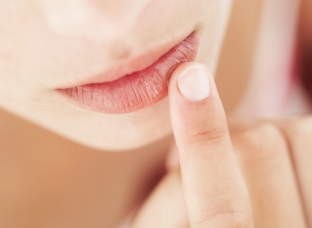While flaws on the body can be hidden under clothing, obvious flaws on the face cannot be hidden. The appearance of inflammation on the lips brings a lot of inconvenience and, in addition to unpleasant sensations, develops complexes in a person about his appearance. In order not to face such a problem, you need to remember about regular lip care, and if you still failed to avoid cheilitis, learn from the article on how to neutralize inflammation on the lips.
The development of inflammation on the lips is explained by the fact that the skin in this area is different from that in other parts of the body. Despite the fact that there is a protective stratum corneum on the red border of the lips, compared to the skin in other places, it is too thin. Lips are always exposed to any adversity – whether it's the harsh climate, or the chemicals that make up cosmetics. Due to the sensitivity of the lips, they require special care.
There are a large number of different types of cheilitis that are similar in clinical manifestations, but have a different origin and, accordingly, the treatment should also be different.
Meteorological cheilitis
Occurs due to exposure to strong winds, cold air. This type of disease is more common among men, especially those who work outdoors and suffer from general weather sensitivity. In this case, the symptoms are itching, dryness and peeling, as well as the occurrence of erosions and boxes on the lips, and cracks appear in the corners of the mouth.
What to do:
- try to be outside as little as possible when the weather is too cold or windy;
- Protective lip balm should be used regularly;
- take B and PP vitamins;
- It is mandatory to use special wound-healing ointments and frequent rinsing of the mouth with extracts of oak bark, calendula, chamomile.
Read more in the material: "What lips suffer from: meteorological cheilitis"
Hypovitaminosis cheilitis
The appearance of such can be triggered by a lack of B vitamins (especially B6 and B2). It manifests itself in the form of peeling, itching and redness. There are also bleeding cracks in the corners of the mouth. Often accompanied by glossitis (inflammation of the tongue).

What to do:
- you should follow a diet that excludes the use of certain foods, namely: spicy, sour or too hot;
- eat as many vegetables and fruits (non-acidic) as possible, and eat more foods that contain iron and riboflavin;
- take complex vitamins (especially A, E and group B);
- Use protective lip balm regularly.
Actinic cheilitis
It often appears in the warm season (spring and summer) due to the increased sensitivity of the red border of the lips to ultraviolet.
In this case, the red border of the lower lip swells, its color becomes bright red and white scales appear on the surface. Perhaps the appearance of white bubbles, after opening which forms a crust. There is itching, burning, sometimes soreness of the lips.
What to do:
- reduce exposure to solar radiation;
- use sunscreen cosmetics;
- apply hormonal ointments;
- take vitamins;
- rinse your mouth with herbs.
Fungal cheilitis
Caused by a fungal infection of Candida albicans. Appears due to neglect of oral hygiene, due to hypovitaminosis B2, or after prolonged use of antibiotics or glucocorticoids. It can also occur as a result of irrational nutrition, when a person consumes large quantities of carbohydrate food, but almost does not consume protein.
The lips swell and turn red, the border becomes dry and flaky. In the corners of the mouth, weeping areas with erosions appear, which are covered with a white coating that can be easily removed.
What to do:
- get tested for a fungal infection;
- if it is confirmed, the doctor will prescribe antifungal drugs, which should be taken in conjunction with salicylic acid and vitamin B2;
- Problem areas require careful treatment with an oil solution.
Allergic cheilitis
It occurs as a result of increased sensitivity of the lip border to chemicals (dyes) that are part of toothpastes, dentures or lipsticks.
Characterized by the occurrence of violent swelling. The red border of the lips becomes inflamed and reddens, and soon abundant scales and crusts appear on it. Possible formation of painful cracks.
What to do:
- use vitamins and antihistamines;
- externally apply lotions of 2% solution of boric acid, and anti-inflammatory creams containing glucocorticoids, sulfur and salicylic acid;
- exclude substances that irritate the mucous membrane of the mouth and the red border of the lips;
- meal should end with rinsing the mouth with chamomile infusion;
Exfoliative cheilitis
Appears in connection with depression, anxiety or vegetative neurosis.
Only the middle part of the red border of the lips is affected, while the edges remain normal. There is itching, peeling, swelling develops, the lips become covered with a crust. It is more common among women, especially those who suffer from vegetative neurosis. Mainly disturbs people who often lick or bite their lower lip.
What to do:
- use ointments that have anti-inflammatory and antibacterial effects;
- take vitamins and immunomodulators, as well as sedatives and tranquilizers;
- in some cases, psychotherapy is required.
The skin of the lips requires special care, the only way to protect it from the development of such an unpleasant consequence as inflammation.
Source estet-portal.com






Add a comment